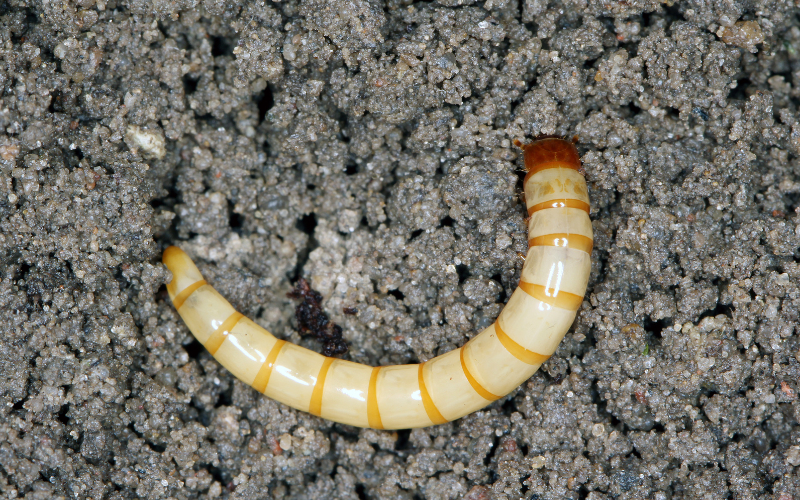If you’re a gardener, you’ve likely encountered a variety of pests that can wreak havoc on your plants. Wireworms are one of these pests. Although they may not be as well-known as some other garden intruders, they can cause significant damage to your vegetable garden.
In this blog post, we’ll find out what wireworms are, how to identify them, the damage they can inflict, and most importantly, how to effectively manage and control them in your vegetable garden.
What Are Wireworms?
Despite their name, wireworms are not worms at all; they are the larval stage of click beetles. These slender, cylindrical larvae are typically brown or yellow color and range in size from 0.5 to 2 inches. Wireworms are known for their hard, segmented bodies, which resemble tiny pieces of wire, which gives them their name.
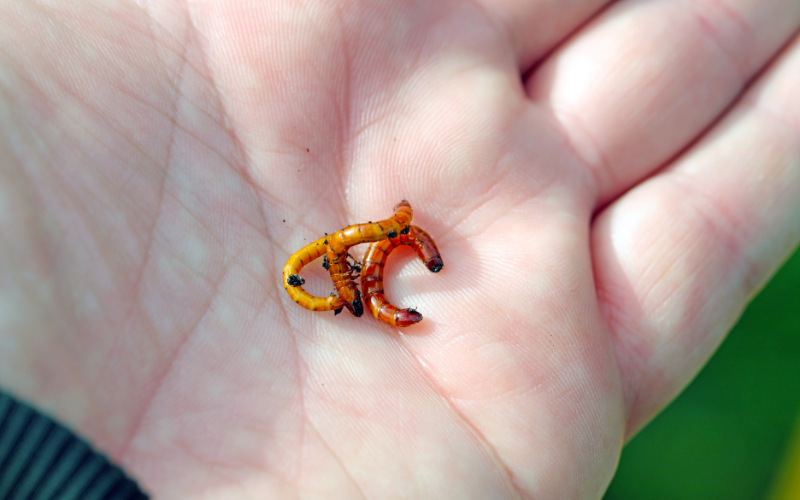
Which vegetable plants do wireworms affect?
Wireworms are known to affect a variety of root crops. Some of the common host plants that wireworms can damage are Potatoes, Carrots, Beets, and Onions. They may also damage Corn, other root vegetables like Radish, Turnips, and Parsnips. Apart from vegetables, grasses and cereals can also be affected by wireworms.


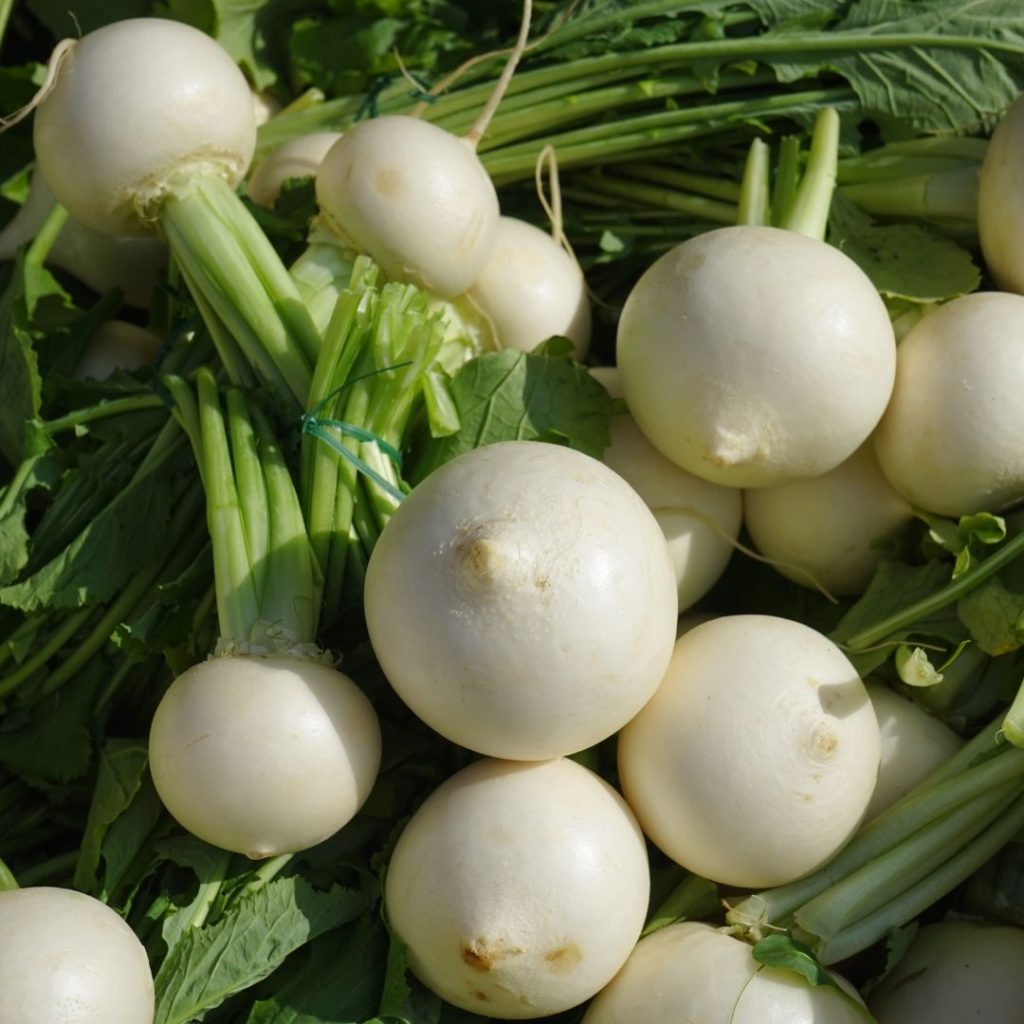

Identifying Wireworm Damage
Wireworms primarily feed on the roots, seeds, and underground parts of various plants. Their feeding activity can lead to several symptoms in your vegetable plants:
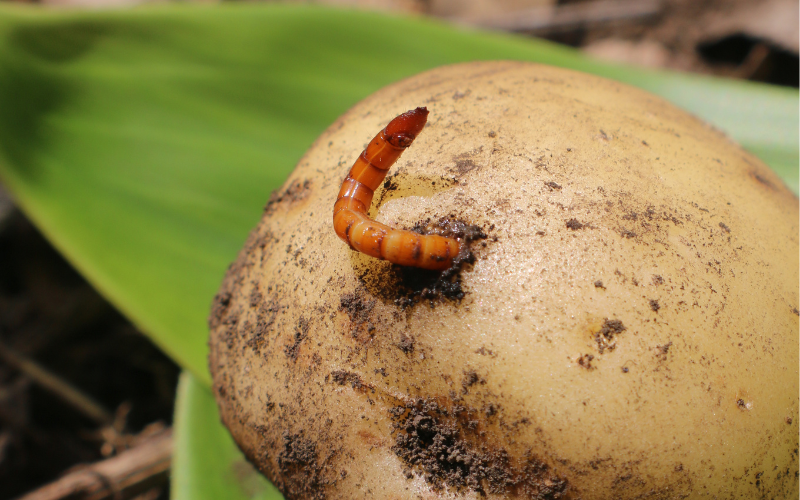
Stunted Growth: Affected plants may appear stunted, with reduced vigor and slow development.
Yellowing of leaves: Wireworm-infested plants may exhibit yellowing or wilting leaves, a sign of reduced nutrient uptake.
Tunneling: These pests leave behind small, irregular tunnels or holes in plant roots and tubers.
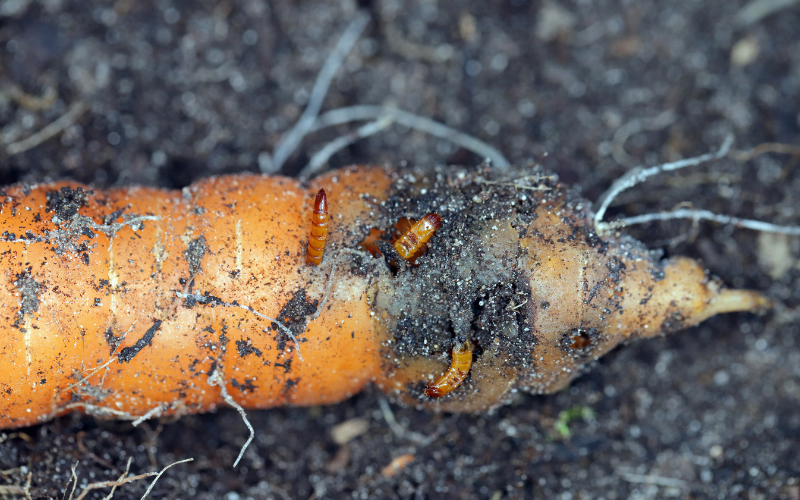
Failed Germination: Seeds planted in soil containing wireworms may fail to germinate or sprout weakly.
Understanding Their Life Cycle
To effectively manage wireworms, it’s essential to understand their life cycle:
Egg Stage: Adult click beetles lay their eggs in the soil during the spring and early summer.
Larval Stage (Wireworms): The eggs hatch into wireworms, which can remain in this stage for 4-5 years, depending on environmental conditions and the specific species. Depending on the species, wireworms can be active in spring or even winter.
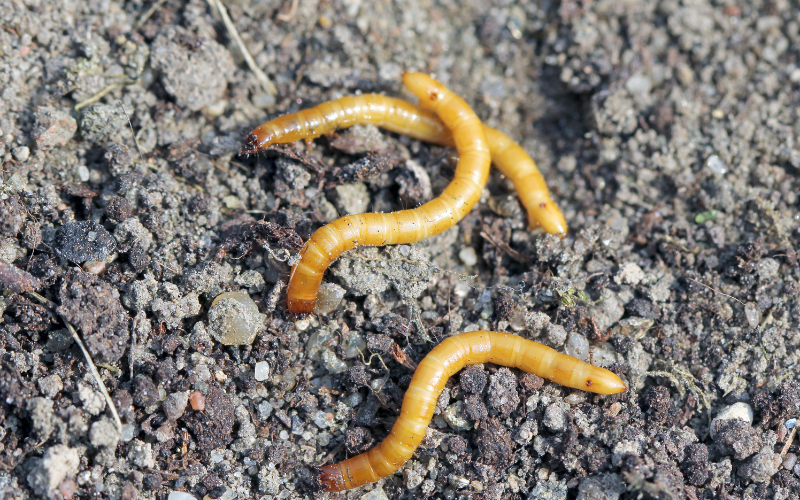
Pupal Stage: After their larval stage, wireworms pupate in the soil.
Adult Stage: Eventually, adult click beetles emerge from the pupae and lay eggs, when temperatures increase, completing the life cycle.
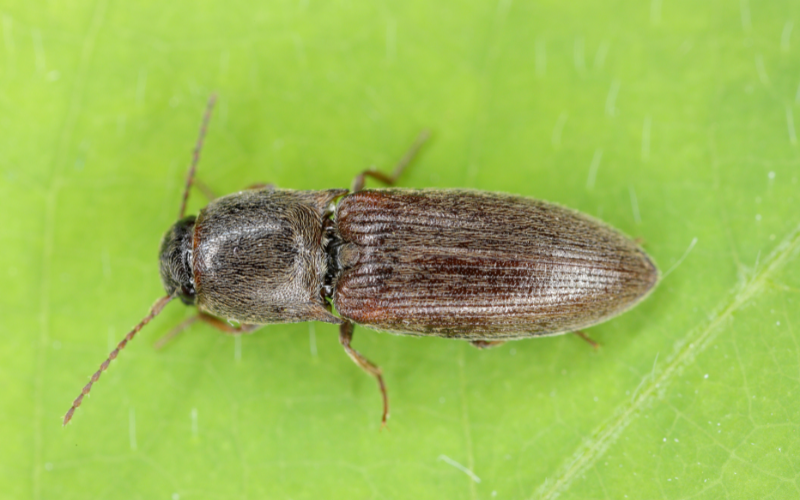
Wireworm Species
There are numerous wireworm species, and they can vary in behavior, habitat, and potential for damage. Some common wireworm species include the corn wireworm, the sugar beet wireworm, and the tobacco wireworm.
Managing Wireworm Infestations
Dealing with wireworms can be challenging, but it’s not impossible. Here are some strategies to manage and control these garden pests:
- Crop Rotation: Practicing crop rotation can help disrupt the wireworm life cycle. Avoid planting susceptible crops, like potatoes or carrots, in the same location year after year.
- Trap Crops: Planting trap crops like mustard or radishes can attract wireworms away from your main crops. Remove and destroy the trap crops once they become infested.
- Tillage: Deep tilling the soil can expose wireworms to predators and harsh weather conditions, reducing their numbers.
- Beneficial Nematodes: Beneficial nematodes are microscopic roundworms that can parasitize and kill wireworm larvae. You can purchase them and apply them to your soil.
- Chemical Controls: If wireworm infestations are severe, consider chemical treatments. Consult with a local extension office or garden center for appropriate insecticides.
- Traps: Place slices of potato or carrot about an inch below the soil’s surface in your garden during the late spring. In a week or two, check these traps for wireworms, which can then be removed and destroyed.
While wireworms can be a persistent nuisance in your garden, understanding their life cycle and implementing effective control measures can help protect your vegetable plants. By incorporating the methods mentioned above and staying vigilant, you can significantly reduce the impact of wireworms in your garden.

